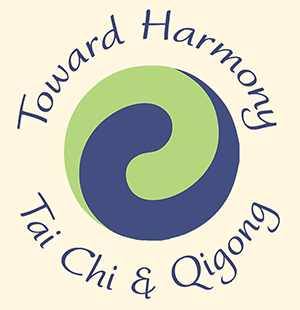Carol’s Journey Into Qigong
/“When I flared for the first time, it was a really stressful time in my life. There was a lot going on and I was really upset, and I was really angry, and then that M.S. flare happened.”
That’s a quote from Carol, a longtime qigong student at Toward Harmony. She was talking about her first experience of symptoms that led to her being diagnosed with Multiple Sclerosis (M.S.).
A while back I asked a number of our students what it was about our classes that kept them coming back. I was not surprised that many of the people I talked to mentioned relief from pain and other symptoms of injury or illness. However, there was another theme that was repeated - relief from anxiety and stress.
A number of students specifically mentioned relief from stress and anxiety related to a medical condition. Stress and anxiety can contribute to medical issues, and an injury or illness can provoke anxiety. It often goes both ways, and this can create a feedback loop.
On top of the stress Carol was already under, the diagnosis itself was very anxiety provoking. She had lost a lot of function in the left side of her body. “I couldn’t raise my left hand above my waist, sometimes, or my shoulder,” she recalls. “I couldn’t lift a dinner plate into the cabinet, and I was kind of freaking out. And no one was giving me very clear answers, except they were all very clear about wanting to put me on a therapy. But there were no answers about what I could expect, whether I would get my left side back.”
Carol went to her first qigong class at the suggestion of a friend. She didn’t have any expectation that it would help. “I really just started it for something to do, to get me out of my house, to get myself out of a funk. I didn’t know anything about it, I went into it totally cold, hadn’t done any research, hadn’t done anything like it before. I really just wanted to get to someplace at a certain time.”
She was a bit skeptical at first. The Chinese concept of chi as a tangible energy in and around the body was foreign to her. “Kathryn [the teacher] would talk about the energy…and I remember thinking to myself, ‘really? REALLY?’”
But she got results. “Every time I walked out of there I felt better. Every single time I walked out I felt better. And that’s what kept me coming back.” That first class Carol went to was Dragon & Tiger Qigong, which she still practices today. She has also learned some more advanced qigong sets.
While she believes that qigong helps her feel better in a number of ways, including reducing inflammation, Carol cites stress and anxiety reduction as major factors. “It helped with stress and anxiety, which is a trigger for MS symptoms, big time, as much as heat or poor diet, or anything else.”
Carol has seen a lot of improvement since that first flare. “For the most part I am asymptomatic. I have regained far more strength, balance, and feeling on my left side than a few doctors said I would. As for stress and anxiety, I feel the practices have helped me know myself better and have given me tools to be healthier and less blocked; physically and emotionally.”
She is on a drug therapy which is designed to delay progression of the disease and reduce flares. However, Carol believes that qigong has played a huge part in getting her to where she is today - and not just in terms of M.S. “The silver lining of my M.S. situation is that it led me to qigong which has enriched my life exponentially, beyond dealing with my disease,” she says.
Carol went on to use a metaphor of physical balance to describe how qigong helped her learn to manage that stress and anxiety. Moving from the lower body as a stable base and balancing your upper body on top is an important principle in qigong.
She described her experience as “like finding the power of the space in between the parts of you…whether its your joints or your thoughts, inhabiting the space between and not being so forward driven that it throws you off center - like the person charging down the street tipping forward and leading with their eyes - that’s sort of a metaphor for how I felt like I was, I would get myself really wound up… So just finding your center and being more upright, not only physically, but mentally and emotionally. That was really powerful.”
As time has gone on, Carol has found deeper reasons to keep coming back to qigong. “The practices I’ve studied have answered a lot of questions I had about myself and ‘beings’ in general. And they have informed how I function and interact with my environment.. and helped with many larger life questions. It’s been very validating. It just made sense. And then it started to fascinate me.”
I think a lot of us who have practiced qigong or tai chi for awhile can relate to what Carol is saying. I know that my experience has been similar in many ways.
What about you? Does Carol’s story resonate with you? What keeps you coming back to qigong or tai chi, or what interests you about it? What brought you to this blog today? Feel free to let us know in your comments.


